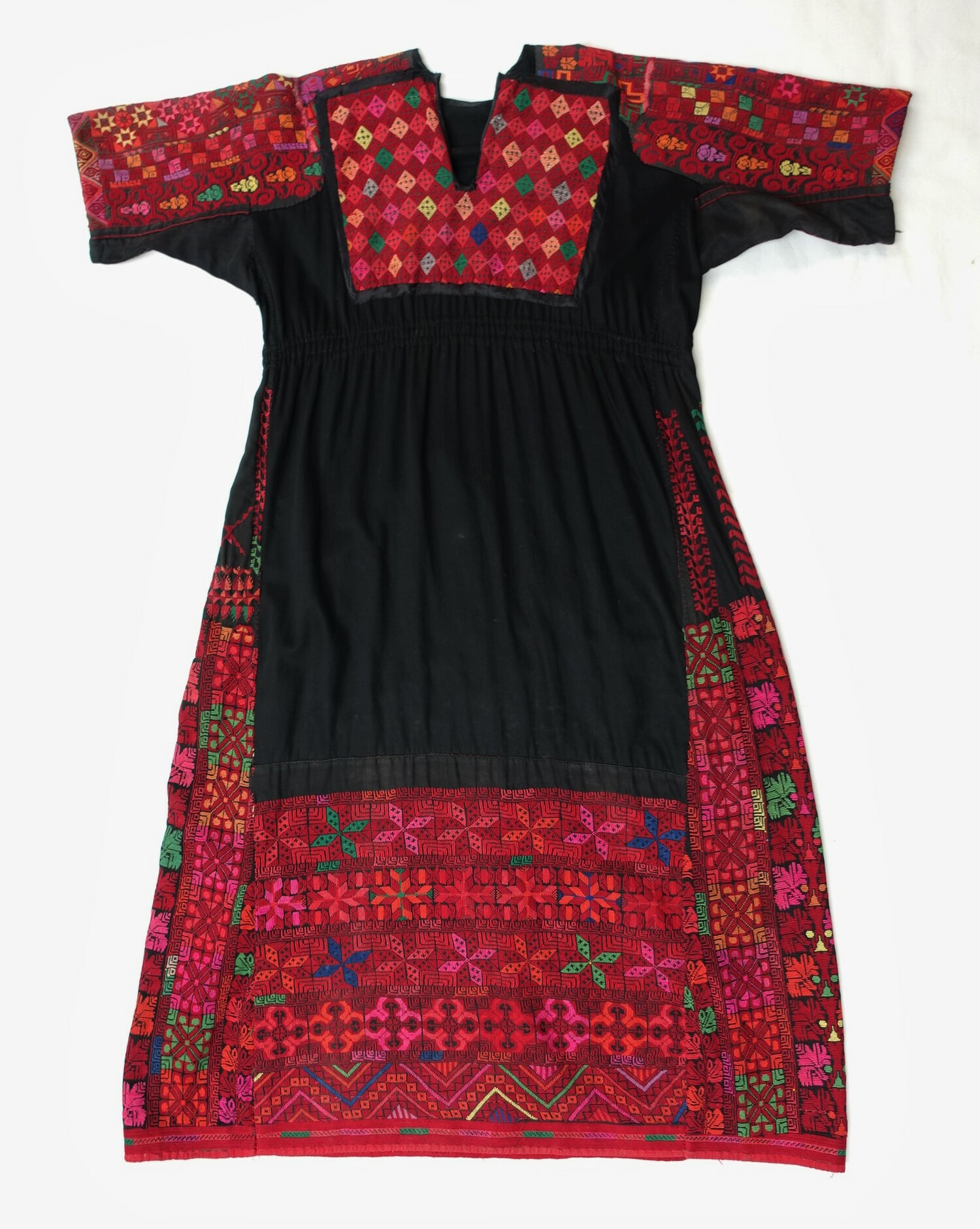
One of the dresses (TRC 2021.3351) is a bit of a mixture and has an interesting history concerning the re-use of garments. One closer examination it turns out to have been made from at least four other dresses. The sleeves are from one garment, the bodice panel from a second, while the lower front panel from a third dress and finally, the side panels and back panel come from yet another dress!
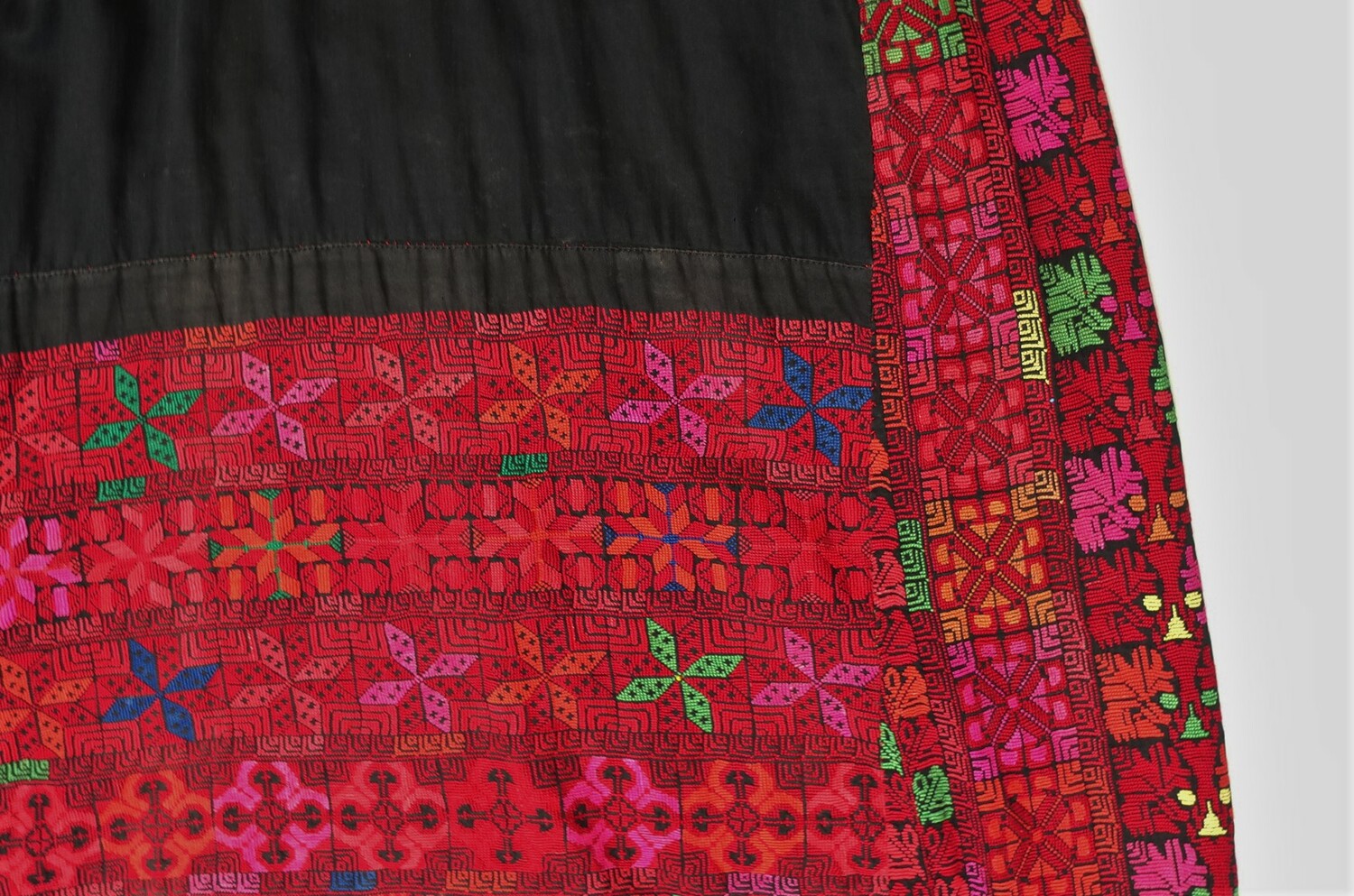
It is also worth noting that some of the seams and joins between the various pieces have been covered with a black velvet ribbon, which is not a typical feature of Palestinian dresses. And finally, as was popular with tourists in the 1970s, the waistline has been shirred with elastic to give it a more fitted form. Quite a fascinating detective story!
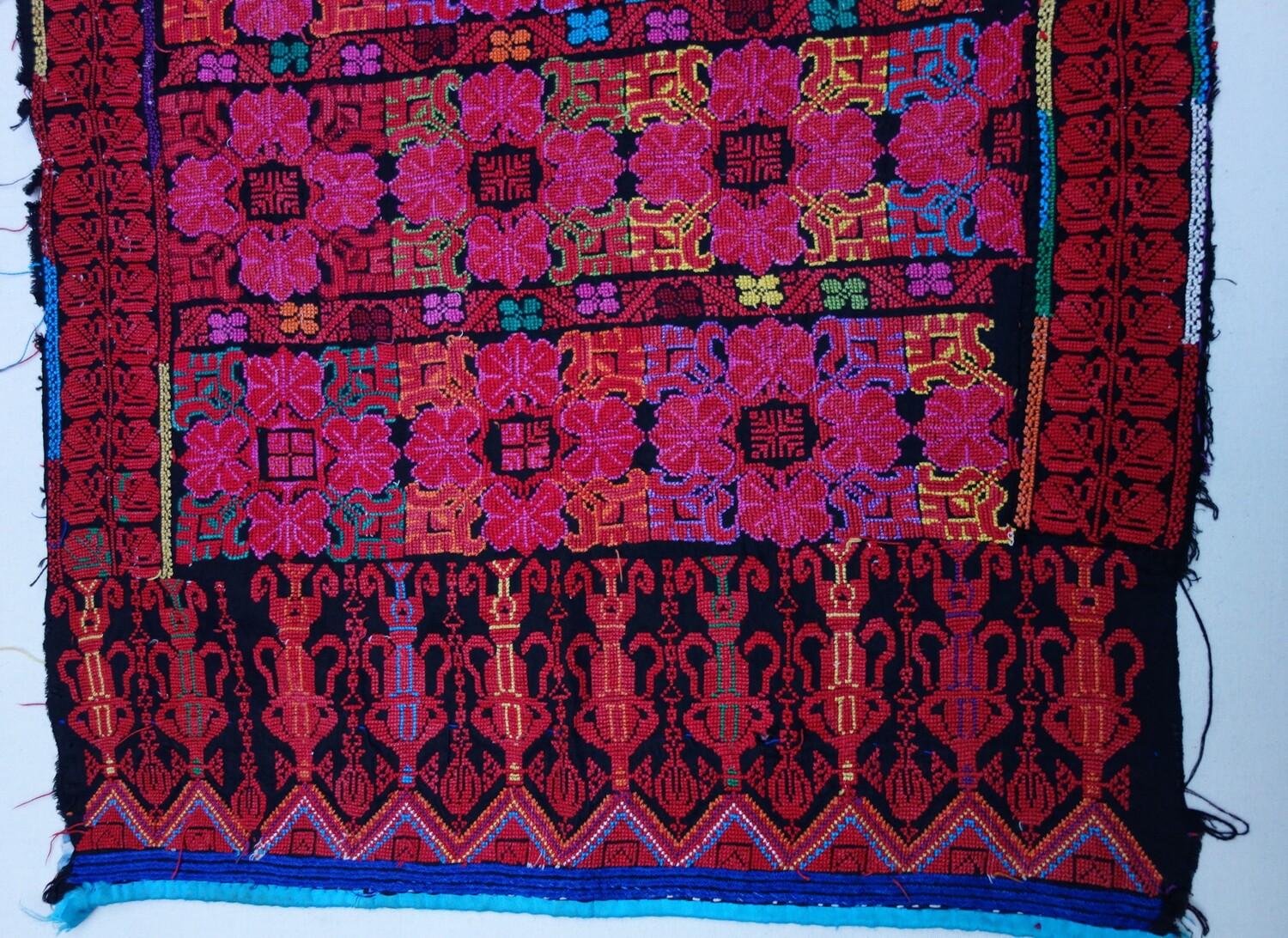 Detail of a back panel of a Palestinain dress with Chinese-style embroidered motifs, mid-20th century (TRC 2021.3349c).Palestinian embroidered dresses are well known for their embroidered designs. Most of the designs on the three dresses are based on geometric shapes and combinations that are well-known from garments in the TRC and other collections. They includes rosettes, vine leaves and tree-of-life motifs with paired birds, as well as interconnecting geometric motifs and zig-zags. In addition, some of the designs are based on DMC-style motifs and include lyres and vases.
Detail of a back panel of a Palestinain dress with Chinese-style embroidered motifs, mid-20th century (TRC 2021.3349c).Palestinian embroidered dresses are well known for their embroidered designs. Most of the designs on the three dresses are based on geometric shapes and combinations that are well-known from garments in the TRC and other collections. They includes rosettes, vine leaves and tree-of-life motifs with paired birds, as well as interconnecting geometric motifs and zig-zags. In addition, some of the designs are based on DMC-style motifs and include lyres and vases.
Chinese motifs
One of the designs on the back panel (TRC 2021.3349c) from a dress, however, appears to me to be slightly different with respect to its appearance and colour combinations and it may actually be Chinese in origin or inspiration. It consists of a large, stylised flower head with a centre that is based on a geometric pattern that is usually found on panel borders and stripes. How it is used here, however, has the feel of a Chinese seal pattern. In addition, the use of red and pink together can be found in traditional Palestinian work, but most designs include contrasting colours such as red with blue or yellow.
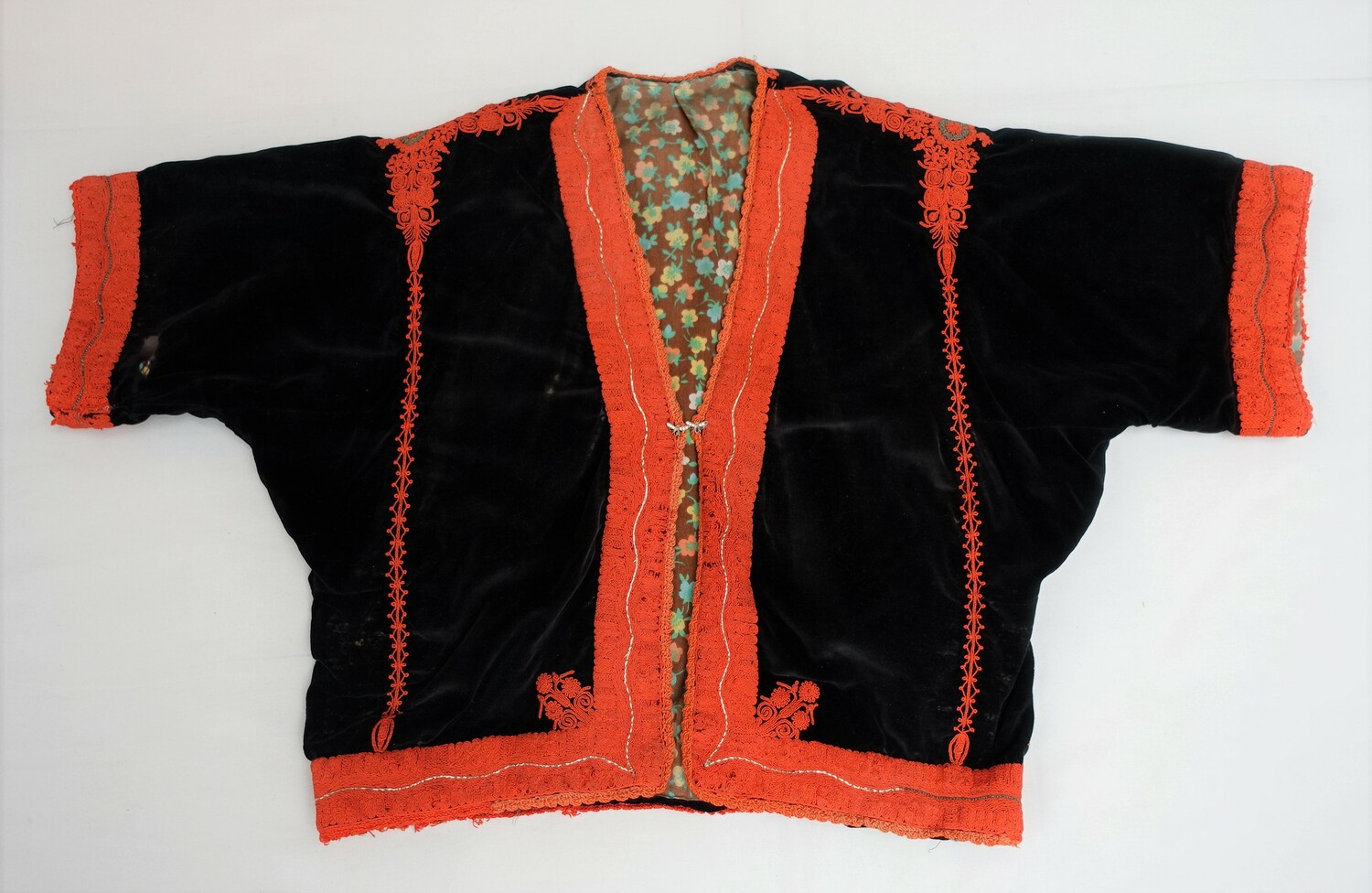
These shawls originated in Canton and by the 1920s these shawls were being mass produced and exported all over the world, including Europe and the Americas. And just to add to the confusion, they were sometimes known as Manilla shawls after the Philippine capital. For Chinese export embroidery, click here.
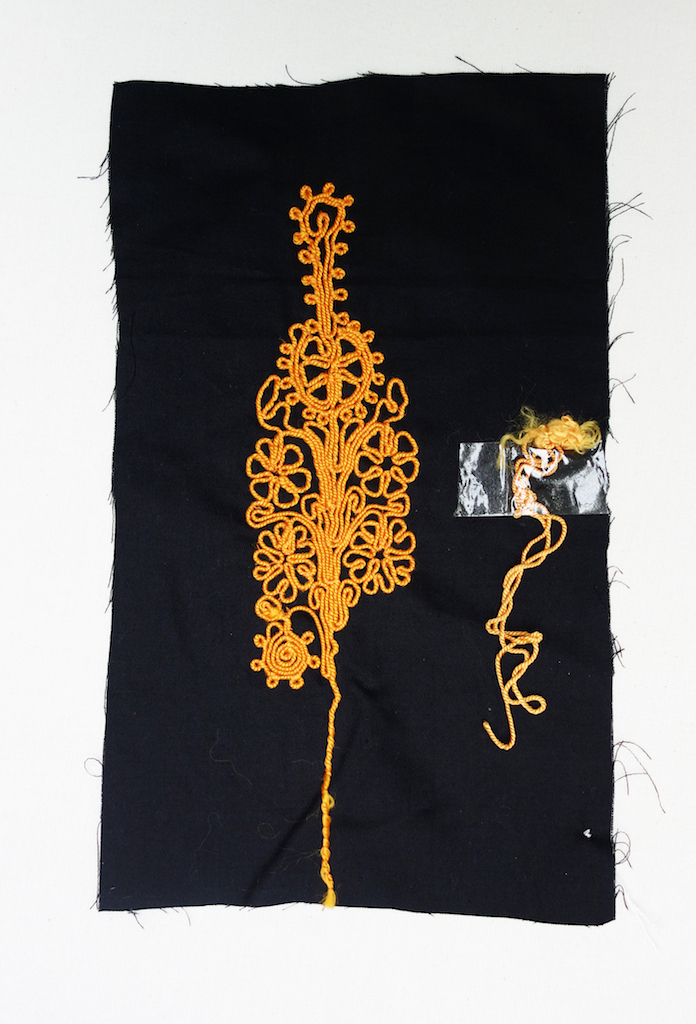 Sample of Bethlehem embroidery, 1980 (TRC 2021.2840b).Bethlehem jacket
Sample of Bethlehem embroidery, 1980 (TRC 2021.2840b).Bethlehem jacket
Among the items given by Mw Oranje is a black velvet jacket (TRC 2021.3352) decorated with geometric designs in orange cord that was couched down. This type of embroidery (see for example, TRC 2021.2840b) is typical for Bethlehem and was worked by professional, female embroiderers (TRC 2021.2840a).
This type of embroidery was also used for a range of items, especially dresses (TRC 2005.0143) and jackets. The most elaborate forms include couching as well as stylised floral motifs worked in coloured floss silk using satin stitch.
The embroiderers also made couched work and satin stitch embroidery for garments worn in other parts of Palestine. The dresses worn by women in Beit Dajan, for example, had a velvet back panel with Bethlehem couching and embroidery (see for example, TRC 2005.0144).
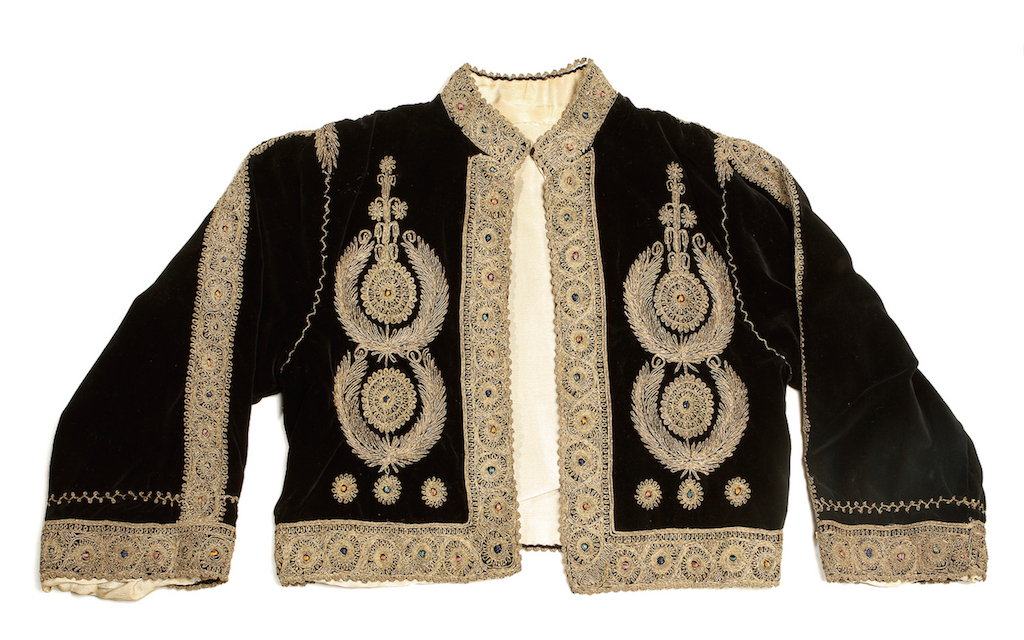
Gillian Vogelsang, Director TRC, 15 December 2021










